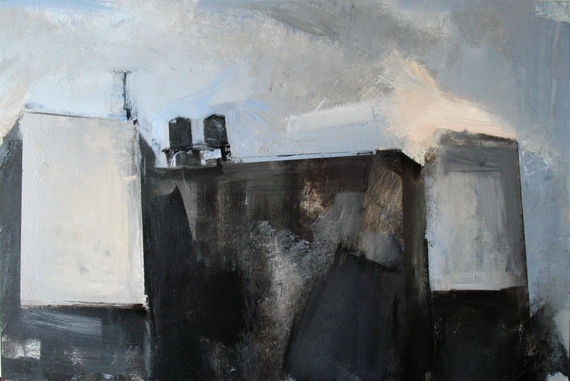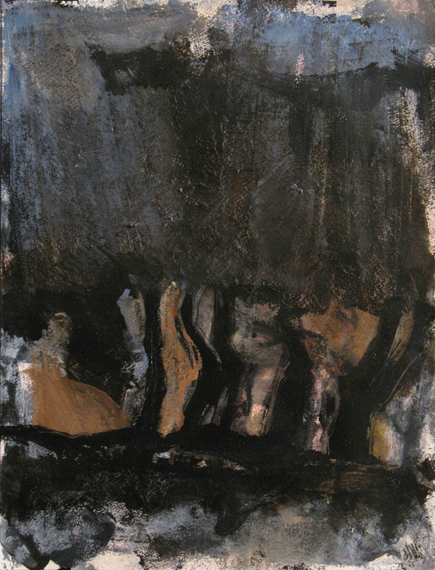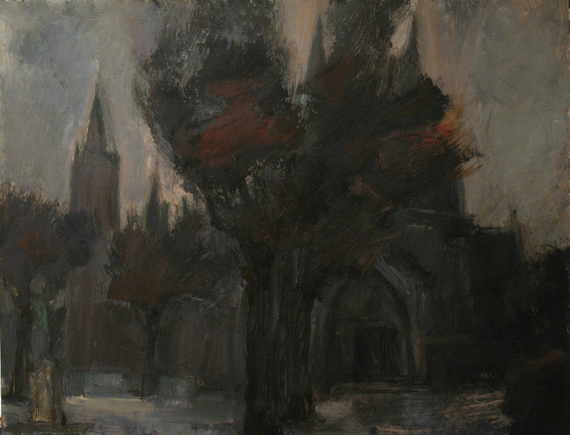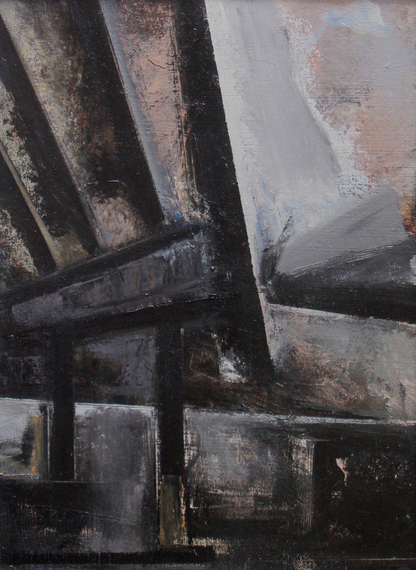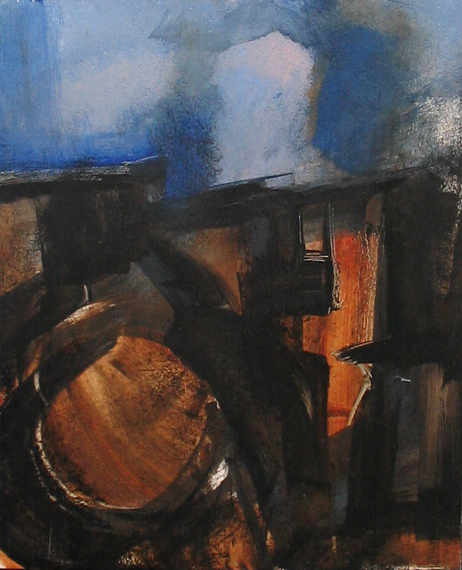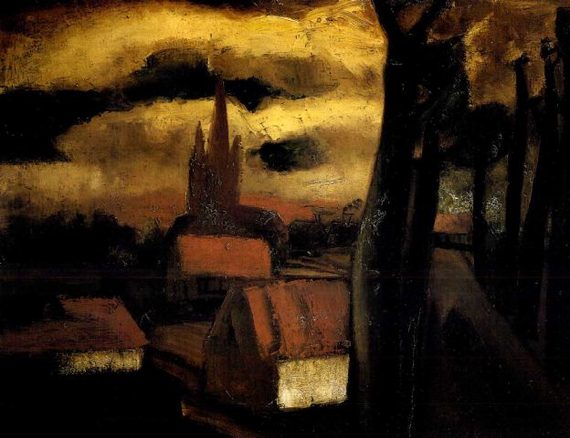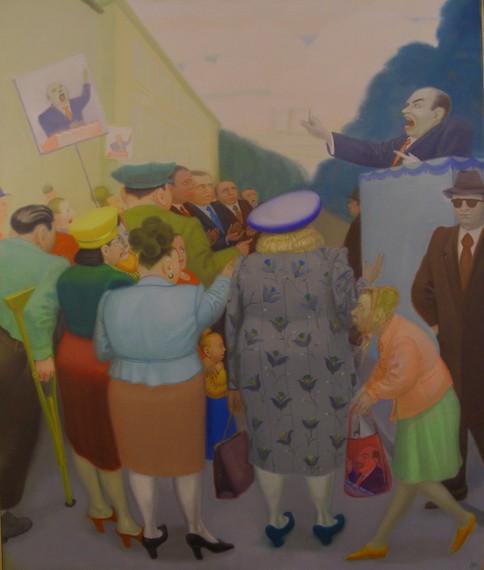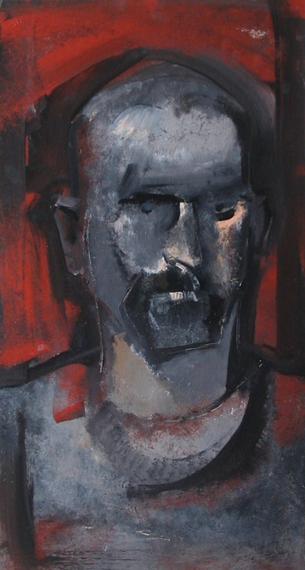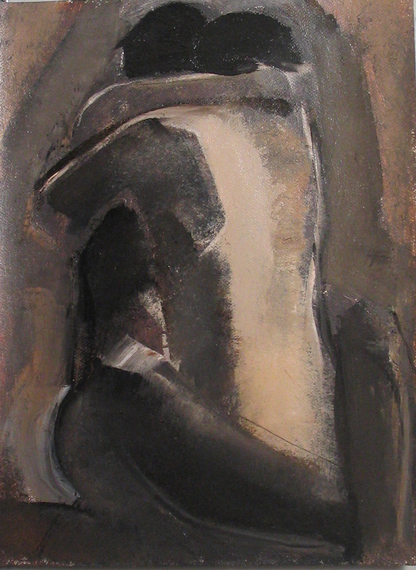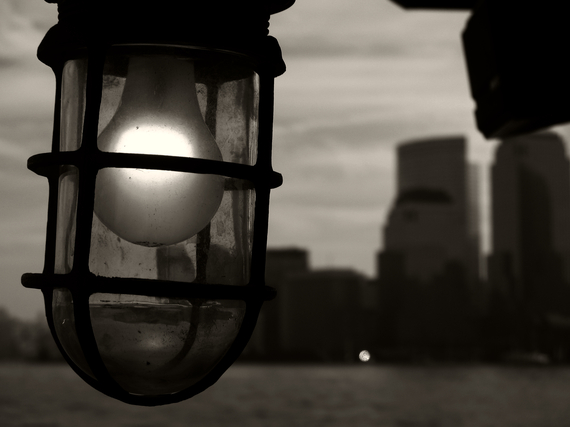This is the second of a series of interviews that focus on Local 829's Scenic Artists, the "Behind the Scenes" talents who sculpt and paint in a variety of ways, the sets we see on television and in movies and documentaries, on theater stages and in the backgrounds of television and internet commercials.
I first met Roman Turovsky a few years ago while working on the set of Law and Order: SVU. I was impressed with his scenic art skills and knowledge and later found out that he was a prolific figurative artist as well as a musician as he had already compiled an impressive legacy of performances and musical compositions for the Baroque lute and the torban, as well as the viola de gamba and carillon. I don't profess to know much about such things as the Baroque Lute, but I do know when I see a substantial painter and draftsman and Turovsky is one.
Turovsky, who was born in 1961 in Kiev, Ukraine, emigrated with his family to New York City, making a brief stop in Rome, in 1979. I recently had the opportunity to ask Turovsky a few questions about his art.
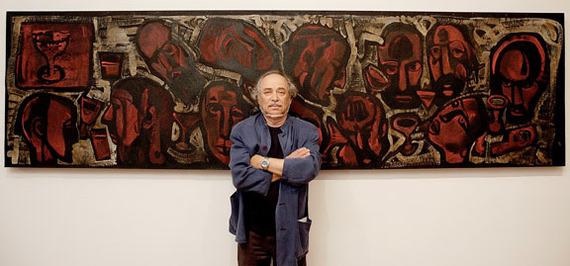
Artist Mikhail Turovsky, father of Roman Turoksy, standing in front of his oil on canvas, Last Supper (2002), oil on canvas, 36 x 144 inches, Chelsea Art Museum, photo by Janusz Kawa (2005)
DDL: Growing up with a formidable artist in the house, your father Mikhail Turovsky, must have had a profound influence on you. The first thing one will notice looking at your work is the strong structural form you assign to your subject matter whether it's a life study or a landscape. You might call it Dynamic Cubism. Is this approach something you learned from your father?
RT: Yes, and no. I have certainly inherited his principles of spatial organization (along with his high standards). However, my coming of age occurred in this country, and by then I've already abandoned the elliptical old-world self-expression in favor of more linear and angular American ways (and this applies to both visual and literary expressive language).
DDL: Linear and angular is a very good way to describe the strong dynamics of your art. How would you describe the mood of your figurative works and landscapes?
RT: Their mood is dark. I've always believed that my purpose as an artist (or any artist's for that matter) is to remind the viewer that life and its pleasures are finite. Thus, I transmit this sense of foreboding that inhabits the figurative world for me. When I was a teenager I gave one such cityscape as a gift to my newlywed friends. They hung a banner above it, which read "Say NO to the Neutron Bomb!"
DDL: What, if anything is the root cause of this lifelong foreboding that haunts you -- is it something left over from the life you experienced in the former Soviet Union or it is a more personal tendency or both? We all have good reason to hold some fear in this day and age but in your work, the depth and breadth of the uneasiness is striking.
RT: Well, it is derived from both personal and collective experiences. A heavy historical sense is certainly a common curse in my neck of the woods, for very tangible reasons. Both my wife's families and mine have suffered greatly in the upheavals of the 20th century. The repeated dispossession, narrow escapes from major WW2 atrocities; Stalin era prisons and internal exile that befell our respective families have caused us both to develop a marked preference for Zen furnishings. The less you own, the easier it is to run and start anew elsewhere. (We were able to maintain our Zen preferences up until our children came along. They did change our lifestyle quite a bit!). The genetic memory of a refugee, if you will, on top of a genuine immigrant experience -- consequently, I prefer to be pleasantly surprised that things turn out much better than expected, to dire disappointments in great expectations.
You have to keep in mind that both my wife and I grew up with heavy stories of wartime hardship and outright tragedy. The ferry that carried my father's family across the Dnieper narrowly escaped a hit in the bombing raid that destroyed the neighboring barge full of refugees -- the river was covered with bodies and body parts. In addition, those family members that didn't make that ferry perished in the Babi Yar massacre.
So, while not being immune to the lyrical and the comical, from an early age I developed an apotropaic penchant for tragedy, at first in books I read, films I saw and eventually in both my painterly and musical endeavors.
DDL: It's hard to imagine how anyone can live through what you've described and find any hope for the survival of mankind. It must simply be a will to live to tell the tale, or an innate desire to aid your surviving kin that somehow helps you get through and past such unthinkable tragedies. This also explains in part, how the imposing overpasses, trestles and buildings in your paintings occasionally wrench together -- like a gut check -- as you depict the decades of growth and decline near your studio in your Stadt (cityscape) series.
You mention the birth of your twin boys as a change in life style -- that is quite understandable. Do you see any substantive changes in your art since your children have been born? Is the occasional change in your palette, the lighter and brighter skies or the warmer and restrained tones in the buildings indicate more optimism or hope?
RT: Naturally, such a demographic explosion affected my palette. In my sons' third year, I painted a variation of Masaccio's great work Expulsion from The Garden of Eden -- my color scheme was entirely red and orange. My setting was quite unorthodox however: while the composition is clearly influenced by Masaccio, the family expelled isn't just Adam and Eve, but it is now complete with the toddlers Cain and Abel. Both children are now pursuing arts in high school, and I thought there were grounds for cautious optimism...
DDL: It is plain to see that your work in general, your painting and your music and music compositions are influenced by the classics, both from the Renaissance to the mid-18th century and the more recent Modernism of the mid 20th century. In your painting, you hint at what informs your work while still maintaining a strong presence of individuality that I feel is best described as a timeless narrative that pairs the burden of life and memory with the gratification of knowledge and understanding. You talked a little about spatial organization and the high standards you gleaned from your father earlier and I was wondering if you could tell me more about your other influences, in particular, a teacher you met and studied under around the age of 15.

Kathe Kollwitz, Woman with Dead Child (1903), etching, National Gallery of Art, D.C. (Wikimedia Commons)
RT: Of the artists of the past that influenced me, I could list too many! I should mention Signorelli, Cranach, Hodler, Orozco, Manzù, [Mario] Sironi, [Emilio] Greco, [Constant] Permeke, [Otto] Dix, [Käthe] Kollwitz, [Franz] Kline, all of whom saw the world with a rather unkindly eye, but with a great love for their subject matter. And for a more lyrical viewpoint: Benton, [Fedir] Krychevsky, [Alexander] Deyneka and [Kuzma] Petrov-Vodkin. I have also found inspiration in Rockwell Kent's illustrations as well as the folk sculpture of Central and Eastern Europe.
Between the ages 11 and 15, before I had lessons from my father, I've had an excellent teacher, David Miretsky. He is a formidable painter and a master draftsman who continues the tradition of Cranach and Dix. He is a living (and New York based) refutation of David Hockney's optical theories, being able to execute any optical effect without the aid of any optical device. It's old school in a nutshell. He is a master of characterization with a marked tendency to the grotesque, cemented by the traditional technique. I definitely owe a lot to him, even though my temperament moved me toward action-oriented painting, and away from his meticulously executed acerbic contemplation.
DDL: All of these artists you mention have very different ways of looking at and presenting the figure. Even with Miretsky it varies as I see a bit of Fernando Botero in the figures of some works, and at other times I see Dix as you mention. Overall, your figures are more immediate, action-oriented as you say. There is this quiet resignation to the form of many of the nudes while your portraits often tend to be bold and somewhat defiant despite the fleeting detail. Yet the style remains fluid and forceful with no concern for a beginning or an end. What do you hope to convey with your figures? I'm feeling something between timelessness and vulnerability.
RT: It is exactly there, "Love, twixt hope and fear" in Elizabethan poetic terms. Timeless vulnerability, a sense of loss that is the spine of all art; be that the loss of Paradise, Innocence, Faith, Hope, Love, Life. We may be bold and defiant in the face of that, but the eventual resignation is inexorable. This cycle may be repeated more than once in one's lifetime, so there in fact is no beginning and no end to this. Hence I'm concerned with what is in between.
Regarding the nudes: The sexual revolution came late to the USSR, after our departure. That society was (or rather seemed to be) quite innocent for a child, but that innocence was imposed by the puritanical regime, and there was not even a chance of a nude model at my elite art high school. I was, however, growing up surrounded by my father's nudes. These were risqué by Soviet standards, but wholesome by the Western ones. Although I was quite accustomed to the female form, my coming of age and the erotic development happened already in New York City, where I finally had a chance to work with the female form for real. So, I painted my first serious nude only in 1982, I think. Those were interesting times. Luckily the poverty of a new immigrant prevented me from participating in all the available vice. I simply couldn't afford it, and by then I was sufficiently addicted to culture to limit my relationships to the few partners that were uniquely interesting. Look at it this way: the world is a restaurant, but an artist is on the outside looking in -- an observer's resignation to timelessness and vulnerability.
DDL: Before we end this interview I wanted to address your video work. As a scenic artist you are exposed to a variety of productions that, depending on budgetary limits and time constraints, have involved any number of staged sets and locations. In your video, it is near opposite anything you would see in the field. There's this impermanence that you convey. For instance, when you film the underside of the elevated train system of Brooklyn and Queens from a moving car there is no "visual" stability to rest the observer's thoughts, there is repetition structurally but it changes constantly, yet there is a calming effect to the quickly passing changes in light and dark. The baroque music that you use to accompany the video is the only thing that grounds the imagery, and that is largely more of an emotional, somewhat romanticized effect rather than a narrative one. What is your intent?
RT: Each of these video sequences represents an increment in the odyssey in which the only available means to remain afloat are certain cultural memories, remnants or fragments of beauty in the decidedly un-beautiful universe. For me, these harbingers of stability are the sonorities of the distant past, mixed with the certain auditory memories of my early childhood: Ukrainian polyphonic laments sung by girls, crossing the river in the evening to milk the cows grazing on the other side. So I found happiness in the memory of old melodies amid new forms: bridges, highways and skyscrapers of the New World.
All images, unless otherwise noted, are courtesy of the artist.

